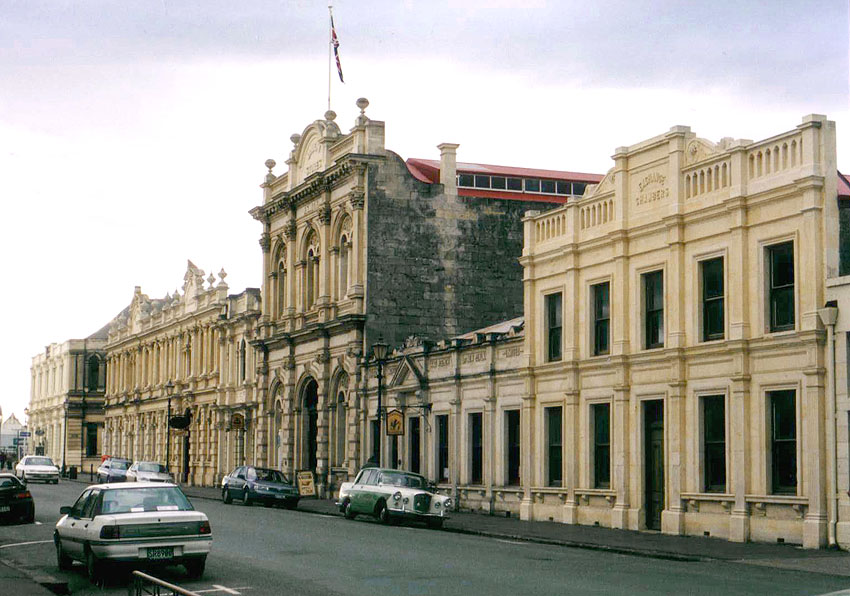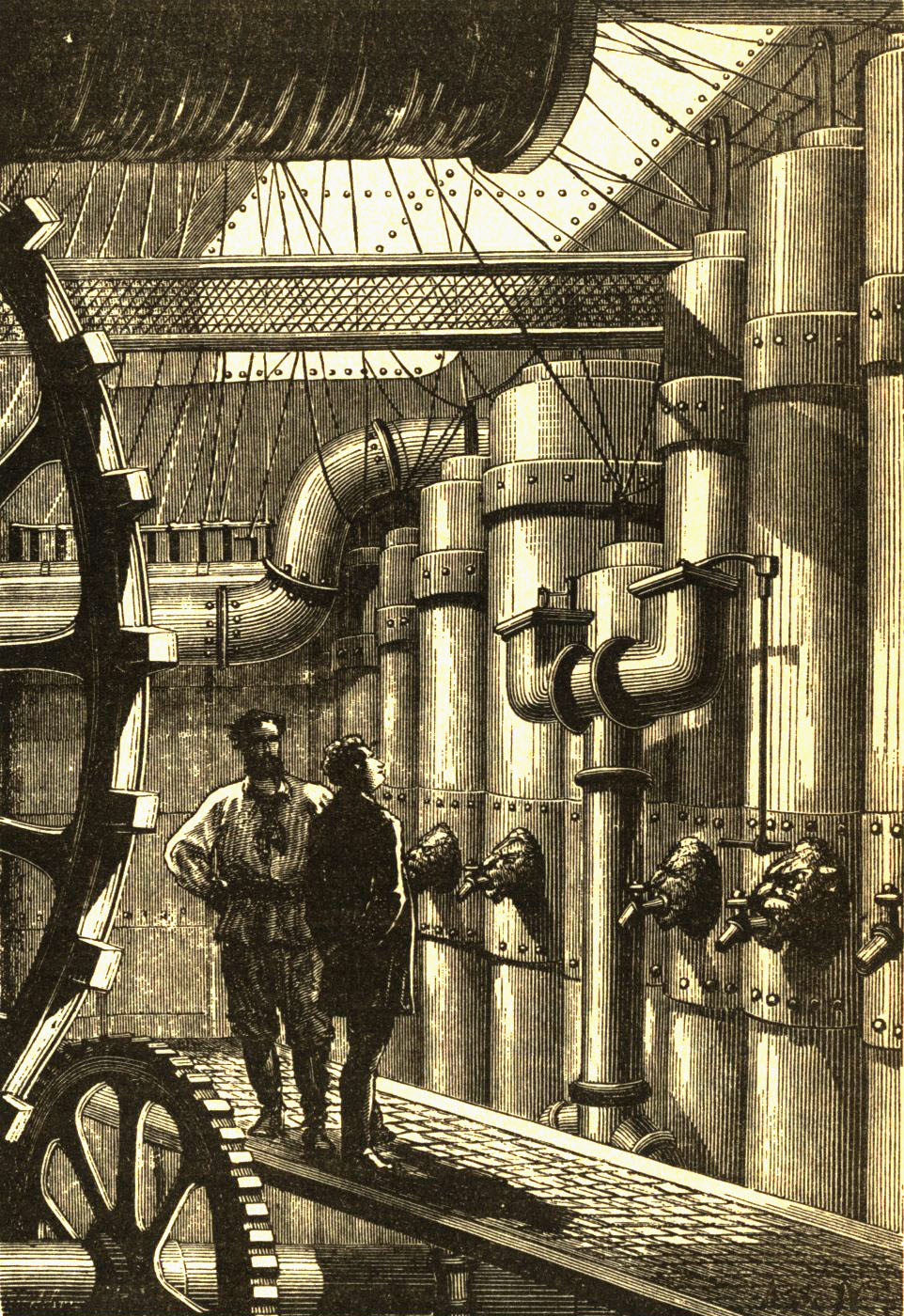|
The Libratory
The Libratory is New Zealand's first dedicated steampunk art gallery, created by Oamaru Oamaru (; mi, Te Oha-a-Maru) is the largest town in North Otago, in the South Island of New Zealand, it is the main town in the Waitaki District. It is south of Timaru and north of Dunedin on the Pacific coast; State Highway 1 and the rai ... artist Damien McNamara (also known under the pseudonym Damotimus Tipotus). Opened in November 2010, It provides local steampunk fans a gallery in which to display their artwork and sculptures. The venue is located on the first floor of the Woolstore, next to Steampunk HQ, and hosts monthly swap meets, where the district's steampunkers exchange ideas, sell goods, and model their fashions. The Libratory changed hands in 2012 and is now branded the Gadgetorium. [...More Info...] [...Related Items...] OR: [Wikipedia] [Google] [Baidu] |
Oamaru
Oamaru (; mi, Te Oha-a-Maru) is the largest town in North Otago, in the South Island of New Zealand, it is the main town in the Waitaki District. It is south of Timaru and north of Dunedin on the Pacific coast; State Highway 1 and the railway Main South Line connect it to both cities. With a population of , Oamaru is the 28th largest urban area in New Zealand, and the third largest in Otago behind Dunedin and Queenstown. The town is the seat of Waitaki District, which includes the surrounding towns of Kurow, Weston, Palmerston, and Hampden. which combined have a total population of 23,200. Friendly Bay is a popular recreational area located at the edge of Oamaru Harbour, south to Oamaru's main centre. Just to the north of Oamaru is the substantial Alliance Abattoir at Pukeuri, at a major junction with State Highway 83, the main route into the Waitaki Valley. This provides a road link to Kurow, Omarama, Otematata and via the Lindis Pass to Queenstown and Wanaka. Oamaru serv ... [...More Info...] [...Related Items...] OR: [Wikipedia] [Google] [Baidu] |
Art Museum
An art museum or art gallery is a building or space for the display of art, usually from the museum's own Collection (artwork), collection. It might be in public or private ownership and may be accessible to all or have restrictions in place. Although primarily concerned with Visual arts, visual art, art museums are often used as a venue for other cultural exchanges and artistic activities, such as lectures, performance arts, music concerts, or poetry readings. Art museums also frequently host themed temporary exhibitions, which often include items on loan from other collections. Terminology An institution dedicated to the display of art can be called an art museum or an art gallery, and the two terms may be used interchangeably. This is reflected in the names of institutions around the world, some of which are called galleries (e.g. the National Gallery and Neue Nationalgalerie), and some of which are called museums (including the Metropolitan Museum of Art, the Museum of Mo ... [...More Info...] [...Related Items...] OR: [Wikipedia] [Google] [Baidu] |
Steampunk
Steampunk is a subgenre of science fiction that incorporates retrofuturistic technology and aesthetics inspired by 19th-century industrial steam-powered machinery. Steampunk works are often set in an alternative history of the Victorian era or the American "Wild West", where steam power remains in mainstream use, or in a fantasy world that similarly employs steam power. Steampunk most recognizably features anachronistic technologies or retrofuturistic inventions as people in the 19th century might have envisioned them — distinguishing it from Neo-Victorianism — and is likewise rooted in the era's perspective on fashion, culture, architectural style, and art. Such technologies may include fictional machines like those found in the works of H. G. Wells and Jules Verne. Other examples of steampunk contain alternative-history-style presentations of such technology as steam cannons, lighter-than-air airships, analog computers, or such digital mechanical computers as Charles B ... [...More Info...] [...Related Items...] OR: [Wikipedia] [Google] [Baidu] |
Stuff
Stuff, stuffed, and stuffing may refer to: *Physical matter *General, unspecific things, or entities Arts, media, and entertainment Books *''Stuff'' (1997), a novel by Joseph Connolly (author), Joseph Connolly *''Stuff'' (2005), a book by Jeremy Strong (author), Jeremy Strong Fictional character *A flying creature in the video game ''Kya: Dark Lineage'' Film *''The Stuff'', a 1985 horror/comedy film by Larry Cohen *Stuff (film), ''Stuff'' (film), a 1993 documentary about John Frusciante's life Illustration *Henry Wright (artist), Henry Wright (1849–1937), worked for ''Vanity Fair'' under the pseudonym "Stuff" Music *Stuff (Holly McNarland album), ''Stuff'' (Holly McNarland album), 1997 *Stuff (band), a 1970s-1980s fusion/rhythm and blues music group **Stuff (Stuff album), ''Stuff'' (Stuff album) *''Stuff'', a 1992 album by Bill Wyman *Stuff (song), "Stuff" (song), a 2000 single by Diamond Rio from the album ''One More Day'' *Stuff (Eleanor McEvoy album), ''Stuff'' (Eleanor ... [...More Info...] [...Related Items...] OR: [Wikipedia] [Google] [Baidu] |
Otago Daily Times
The ''Otago Daily Times'' (ODT) is a newspaper published by Allied Press Ltd in Dunedin, New Zealand. The ''ODT'' is one of the country's four main daily newspapers, serving the southern South Island with a circulation of around 26,000 and a combined print and digital annual audience of 304,000. Founded in 1861 it is New Zealand's oldest surviving daily newspaper – Christchurch's ''The Press'', six months older, was a weekly paper until March 1863. Its motto is "Optima Durant" or "Quality Endures". History Founding The ''ODT'' was founded by William H. Cutten and Julius (later Sir Julius) Vogel during the boom following the discovery of gold at the Tuapeka, the first of the Otago goldrushes. Co-founder Vogel had learnt the newspaper trade while working as a goldfields correspondent, journalist and editor in Victoria prior to immigrating to New Zealand. Vogel had arrived in Otago in early October 1861 at the age of 26 and soon took up employment at the ''Otago Colonist'', ... [...More Info...] [...Related Items...] OR: [Wikipedia] [Google] [Baidu] |
Steampunk HQ
Steampunk HQ is an art collaboration and gallery in the historic Victorian precinct of Oamaru, New Zealand. Opened in November 2011, it celebrates its own industrial take on steampunk via an array of contraptions and sculptures, complemented by audio-visual installations in two darkened rooms and part of the buildings basement. A yard also contains a collection of other industrial parts and projects in various stages of completion. Steampunk HQ is located in the former Meeks Grain Elevator Building, a historic building registered with by the New Zealand Historic Places Trust as a Category I structure. Outside of the imposing free-standing stone building, a coin-operated "steampunk" railway engine greets visitors. This NZR DS class diesel locomotive has been heavily modified with lights, engine and train whistle noises, and fire breathing out of its chimney. The building's exterior walls are decorated with creations such as giant flies made from metal and industrial parts. Insid ... [...More Info...] [...Related Items...] OR: [Wikipedia] [Google] [Baidu] |
Buildings And Structures In Oamaru
A building, or edifice, is an enclosed structure with a roof and walls standing more or less permanently in one place, such as a house or factory (although there's also portable buildings). Buildings come in a variety of sizes, shapes, and functions, and have been adapted throughout history for a wide number of factors, from building materials available, to weather conditions, land prices, ground conditions, specific uses, prestige, and aesthetic reasons. To better understand the term ''building'' compare the list of nonbuilding structures. Buildings serve several societal needs – primarily as shelter from weather, security, living space, privacy, to store belongings, and to comfortably live and work. A building as a shelter represents a physical division of the human habitat (a place of comfort and safety) and the ''outside'' (a place that at times may be harsh and harmful). Ever since the first cave paintings, buildings have also become objects or canvasses of much artistic ... [...More Info...] [...Related Items...] OR: [Wikipedia] [Google] [Baidu] |




